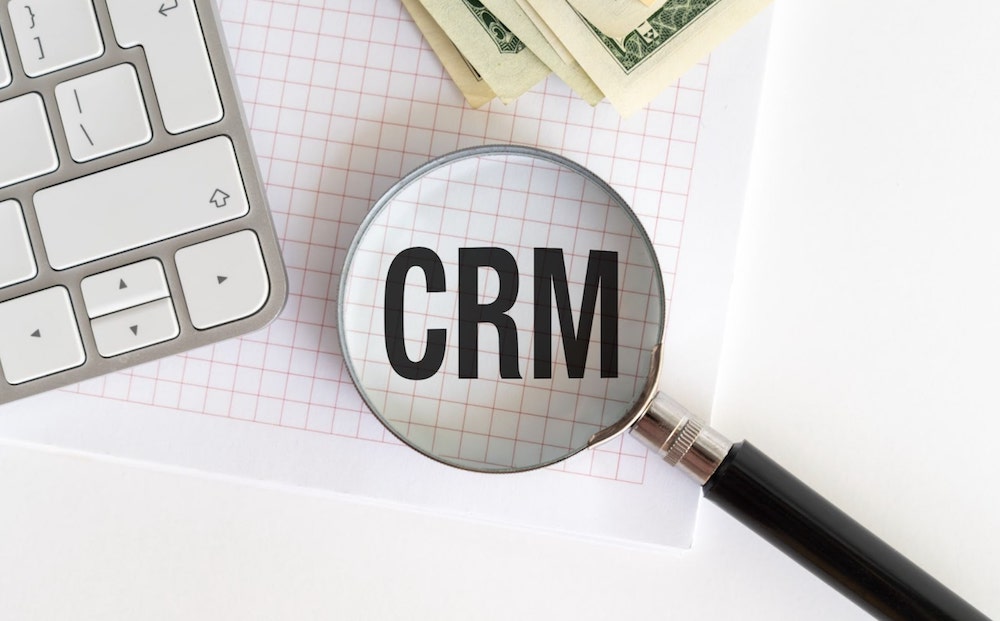
Posted in: Uncategorized
In today’s competitive business landscape, understanding and maximizing the return on investment (ROI) from customer relationship management (CRM) systems is more critical than ever. A well-implemented CRM can be a game-changer for businesses. It can offer insights into customer behavior, streamline sales processes, and enhance customer service. However, measuring the actual ROI of CRM investments poses a unique set of challenges, requiring a specialized approach to data analysis and strategy refinement.
LinkPoint360 emerges as a pivotal tool in this equation. It is designed to seamlessly integrate with your existing CRM system to enhance functionality, reduce manual data entry, and provide the insights necessary to truly understand your CRM’s ROI. This piece will explore the intricacies of calculating this ROI, highlight common hurdles businesses face during its implementation, and reveal how LinkPoint360 can simplify and amplify your CRM investment’s value.
What is CRM ROI?

CRM ROI quantifies the value derived from CRM technology investments relative to those investments’ costs. This metric is crucial for businesses to ascertain the financial success of their systems. Measuring this helps organizations justify CRM investments, highlighting the tangible benefits and guiding future technology expenditures. It’s an essential indicator of a system’s effectiveness, offering insights into how well it enhances business operations and contributes to overall growth.
The impact of CRM ROI extends far beyond mere financial metrics; it plays a pivotal role in strategic decision-making and planning. A robust ROI indicates a well-utilized system that aligns with business objectives. This drives improvements in customer interactions, sales strategies, and marketing campaigns. Conversely, a lower ROI signals the need to reassess CRM strategies, possibly indicating user adoption, data management, or system integration issues. Understanding this metric enables leaders to make informed decisions about technology investments, prioritize initiatives that enhance customer relationships, and craft a roadmap for sustained business success. In this context, tools like LinkPoint360 become invaluable. These tools provide the enhancements and integrations necessary to maximize CRM potential and achieve strategic goals.
What Metrics Should Be Used to Monitor ROI?

To accurately gauge the ROI of CRM systems, specific key metrics stand out for their direct link to financial outcomes and operational efficiency. These metrics provide actionable insights, enabling businesses to fine-tune their CRM strategies for optimal performance. Below, we explore critical indicators that shed light on the ROI of CRM investments, including sales efficiency, lead conversion rate, customer retention rate, and revenue growth.
Sales Efficiency
Sales efficiency is a pivotal metric in understanding ROI for CRMs. It measures the effectiveness of your sales team in utilizing CRM tools to close deals faster and with higher margins. It can be quantified by the ratio of revenue generated to the cost of sales operations. An increase in sales efficiency indicates that your team is leveraging CRM functionalities effectively, leading to lower costs and higher revenue. To measure sales efficiency, track metrics such as the average sales cycle length, the rate of closed deals, and the average deal size before and after implementation.
Lead Conversion Rate
The lead conversion rate is essential in assessing CRM ROI. This metric provides insight into the CRM’s effectiveness in turning prospects into paying customers. You can calculate this metric by dividing the number of new customers acquired by the total number of leads. You would then multiply by 100 to get a percentage. A high lead conversion rate suggests that your strategies and tools effectively identify, nurture, and convert high-quality leads. Monitoring this rate before and after implementing CRM changes offers a clear view of the system’s impact on your sales funnel’s efficiency.
Customer Retention Rate
A high customer retention rate is vital for achieving a strong CRM ROI. Retaining existing customers is generally more cost-effective than acquiring new ones. This metric measures the percentage of customers engaged with your business over a specific period. Customer retention can be improved through targeted CRM strategies such as personalized communication, loyalty programs, and exceptional customer service. Tracking changes in retention rates after implementing these strategies can provide insights into the system’s effectiveness.
Revenue Growth
Revenue growth directly indicates CRM ROI, highlighting the software’s role in driving business expansion. This metric reflects the increase in income generated from sales activities over time and is crucial for assessing the CRM’s impact on your bottom line. A positive correlation between CRM usage and revenue growth indicates that the system supports sales and marketing efforts, and marketing effort enhances them to achieve higher profitability. By monitoring revenue trends before and after implementation or optimization, businesses can effectively measure the system’s contribution to financial success.
How to Measure ROI of CRMs

Measuring the ROI of CRM systems involves a comprehensive analysis of tangible and intangible benefits against the total cost of ownership. It requires a detailed understanding of the initial investments, ongoing operational costs, and the revenue increments attributable to implementation. Businesses can understand their CRM’s financial impact by quantifying these elements, enabling informed decisions on future CRM strategies and investments.
Initial Investment and Costs
The initial investment in a CRM system encompasses the purchase price or subscription fees and costs related to implementation, customization, and integration with existing systems. Ongoing costs may include maintenance fees, additional user licenses, and expenses for training employees to utilize the system effectively. Understanding these costs is crucial for calculating the total investment in your system. Accurate accounting of these expenses ensures a realistic assessment of CRM ROI.
Cost Per Lead (CPL)
Cost Per Lead (CPL) is a critical metric for measuring the efficiency and ROI of CRM-related marketing efforts. It is calculated by dividing the total cost of generating leads (including marketing expenditures and CRM costs) by the number of leads generated. A lower CPL indicates a higher efficiency of your software and marketing strategies in attracting potential customers at a reduced cost. Monitoring CPL over time helps businesses assess the effectiveness of their CRM system. It also helps optimize marketing costs and drive lead-generation efforts.
Revenue Per Lead (RPL)
Revenue Per Lead (RPL) is a vital metric for evaluating the effectiveness of a CRM in converting leads into revenue-generating customers. Calculate RPL by dividing the revenue generated from new customers by the number of leads acquired. This metric provides insights into the quality of leads and the efficiency of your sales funnel. A higher RPL suggests your system is effectively nurturing and converting leads into valuable customers. Tracking RPL allows businesses to gauge their CRM’s impact on sales and marketing performance.
Overall Revenue
Overall revenue is a key indicator of CRM ROI. To assess the impact of CRM on revenue, compare the total income before and after implementation, taking into account the same periods and controlling for external factors. An increase in overall revenue can be attributed to CRM-driven improvements in sales efficiency, customer retention rates, and lead conversion rates. This metric provides a holistic view of the system’s contribution to business success.
Why is the ROI of CRMs Difficult to Measure?

Determining the ROI of CRM systems poses significant challenges due to the complexity of quantifying their direct and indirect benefits. While the cost aspects can be relatively straightforward to calculate, assessing the full range of benefits, from enhanced customer satisfaction to improved sales efficiency, requires a nuanced approach. Additionally, the time frame over which the ROI is measured can significantly impact the results. Longer-term benefits are often more challenging to quantify early on. This complexity underscores the need for a comprehensive evaluation strategy considering all potential variables influencing the CRM’s financial impact.
Employee Training Costs
Employee training costs are a critical factor often overlooked in ROI calculations. Effective CRM utilization demands substantial training to ensure all users can proficiently leverage the system’s capabilities. These costs can vary widely depending on the complexity of the CRM system and the training methods employed. Since these expenses are incurred upfront, they can temporarily weigh down on the perceived ROI despite their crucial role in securing long-term efficiency and effectiveness gains from CRM usage.
CRM Implementation Challenges
CRM implementation challenges, such as data migration, system customization, and user adoption hurdles, can obscure CRM systems’ true ROI. These challenges often result in delays and additional costs that should have been accounted for in the initial budget. Moreover, the indirect costs associated with reduced productivity during the transition period can further cloud the transition period’s immediate financial benefits assessment.
Integration Costs
The hidden costs associated with integrating a new CRM system into existing business processes and software ecosystems can significantly impact the ROI. Integration efforts can range from simple data imports to complex synchronizations with other enterprise systems. These costs, often underestimated during the planning phase, can escalate quickly, affecting the short-term ROI. However, seamless integration can significantly enhance operational efficiency and contribute to long-term ROI improvements when successfully executed.
Strategies to Improve CRM ROI

Improving CRM systems’ ROI is a multifaceted endeavor that requires strategic planning and ongoing effort. The key is ensuring that the system is well-integrated, implemented, widely adopted, and continuously leveraged by the team. Businesses can significantly increase the efficiency and effectiveness of their investments by optimizing system integration, fostering user adoption, and providing continuous training. These strategies help minimize costs, maximize the system’s benefits, and drive sustainable business growth through improved customer relationships and operational excellence.
Optimize CRM Integration and Implementation
Minimizing costs and maximizing benefits of CRM integration and implementation begins with a clear strategy that includes selecting the right CRM that aligns with your business goals, planning for a phased rollout, and ensuring data quality. Best practices involve:
- Conducting a needs assessment to identify key features.
- Integrating CRM with existing systems to streamline workflows.
- Setting realistic timelines to manage expectations.
Engaging stakeholders early and often ensures alignment and addresses resistance. Choosing a CRM integration tool like LinkPoint360 that offers flexibility and scalability can significantly reduce implementation challenges and enhance long-term ROI.
Foster User Adoption
User adoption is crucial for unlocking the total value of CRM systems. Techniques to encourage adoption include:
- Involving users in the selection and implementation process.
- Tailoring training to different user roles.
- Demonstrating the direct benefits to their daily tasks.
- Implementing integration tools such as LinkPoint360.
Offering incentives for utilization and showcasing success stories within the organization can motivate employees to engage with the system. Introducing an integration tool that facilitates updating CRM data increases the likelihood of CRM adoption. Such tools streamline updating CRM data by connecting with other systems and applications used within the organization. Establishing a culture that values CRM as a tool for success rather than an imposed requirement can dramatically improve adoption rates and, subsequently, CRM ROI.
Offer Continuous Training
Continuous training is essential for maximizing CRM ROI, ensuring users can proficiently leverage the system’s evolving capabilities. Regularly scheduled training sessions, access to up-to-date resources, and troubleshooting support encourage users to explore advanced features and optimize their workflows. Incorporating feedback mechanisms to identify training needs and customize content can also enhance the effectiveness of these programs. Investing in ongoing education reflects a commitment to maximizing the CRM’s value.
Maximize CRM ROI with LinkPoint360

When it comes to calculating CRM ROI, businesses face common hurdles during implementation. It is also sometimes difficult to precisely calculate this value. However, certain strategies can maximize ROI CRM.
LinkPoint360 stands out as a CRM integration solution designed to address the challenges of maximizing CRM ROI. With its unique features, seamless support, and robust integrations, LinkPoint360 not only simplifies integration and enhances functionality but also significantly boosts user adoption and overall system effectiveness. By offering a platform that integrates effortlessly with your existing CRM, LinkPoint360 reduces implementation and operational costs.Discover the difference a tailored, fully supported CRM integration solution can make—request a demo today and take the first step towards maximizing your ROI.



